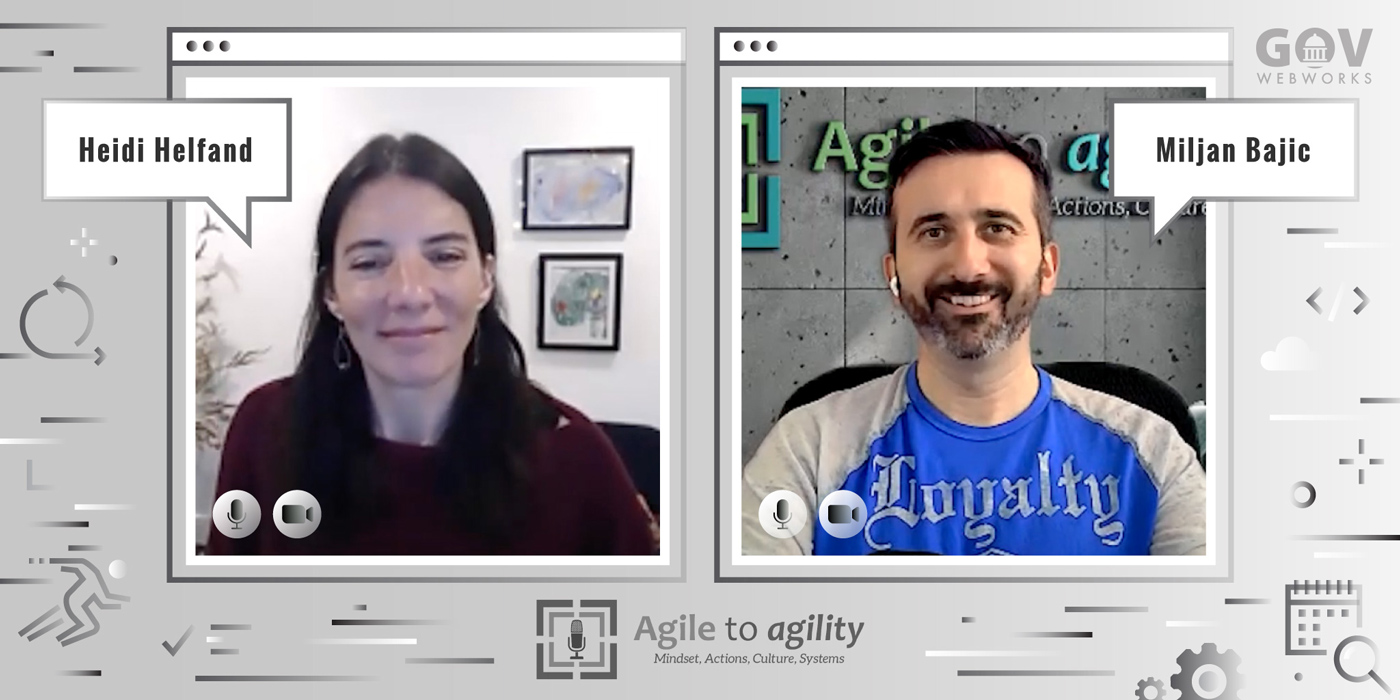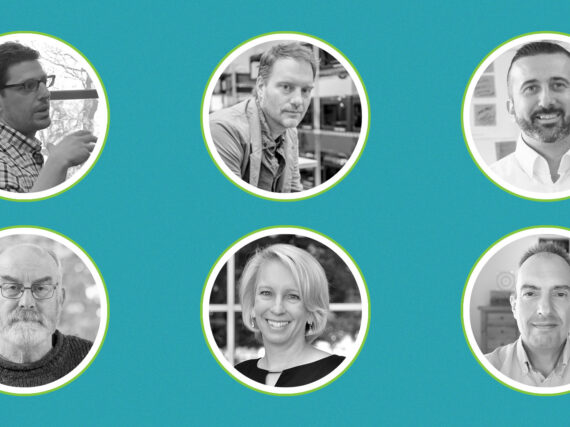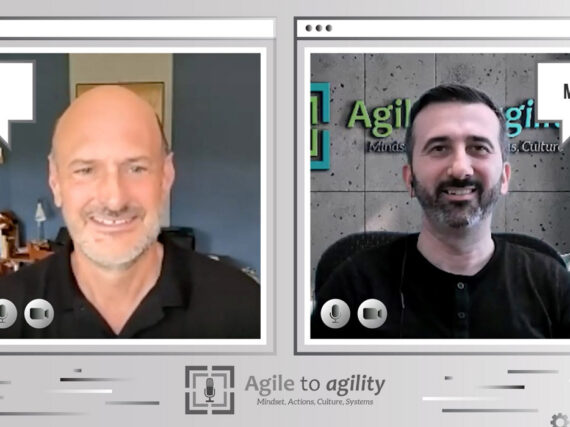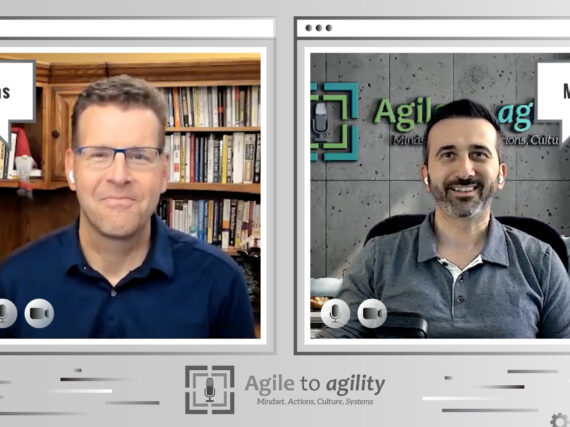“I read a lot of books that make me feel like I’ve been doing it wrong for the 20 years I’ve been in the software industry,” Heidi Helfand notes in a YouTube presentation about reteaming. The books say things like, “Teams with stable membership perform better.” However, in her experience, as for many in the software industry, teams constantly change and grow, rather than remain stable.
“Team change is inevitable, so let’s focus there,” Helfand suggests. “Let’s get good at dealing with team change, and catalyzing it, as opposed to some quest for ultimate stability.”
In this edition of Agile to Agility Highlights, Miljan Bajic talks with with Helfand, author of Dynamic Reteaming, The Art & Wisdom of Changing Teams, about the patterns teams follow as they grow and evolve. The second edition of the book, published by O’Reilly in 2020, brings together research from software companies around the world to define ways to make reteaming most successful.
What follows are some highlights from the discussion between Helfand and Bajic.
How do you define a team?
A team is made of people that come together and have joint work, or a shared compelling purpose, from the smallest unit of two thought partners working together, to concentric workgroups or people working in parallel teams.
What is reteaming and how does it work?
The basic philosophy of Dynamic Reteaming is that teams evolve and change. A team will begin, it will pass through time, work on joint work together, and then things will happen that are outside of the control of the team and the team will change. For example, Covid-19 had a definite impact that many of us were not expecting, and it changed how many teams operated.
Sometimes teams will grow bigger, sometimes people leave. Sometimes the team creates the change, and sometimes an outside force changes the team composition. Reteaming is always happening. I’m someone who works inside and helps companies grow bigger. As the 10th employee of a company, I left when there were 650 people, so we had a lot of reteaming, growing, and changing.
I wrote the book because I was tired of feeling that we were doing it wrong. In companies that grow and change and double in size, you’re not doing it wrong if your teams change. Outdated literature insisting on a stable team together forever is inappropriate when you’re at a fast growing company.
What is the message of your book?
The main message I want to send with the book is that team change is inevitable, so you might as well get good at it. I’m not trying to sell a framework or consulting services to convert a company into some different thing, this is more of an anthropological study. I interview people, look for themes, and write about them. We have been so addicted to frameworks, but the reality is that our world is becoming more complex, and we have to use our heads and not follow things blindly.
If you are working in a company and you notice a lot of change, there are practical things team members can do to master change instead of trying to fight it. The examples from companies all over the world show five different patterns for how teams change.
What are the five teaming patterns?
There’s one-by-one, adding or subtracting team members one at a time. Then there’s merging, where two teams will merge together and become one team and maybe they’ll stay like that. There’s a story in the book about a company in New Zealand that merged two teams because they pair programmed and when they switched pairs, they wanted more variety and knowledge among a larger group of people. You’ll also find merging when companies acquire other companies.
One of the most common re-teaming patterns is growing and splitting. Sometimes our teams grow big, we add people to our teams and we feel less effective. Meetings take longer, the work becomes unrelated. Typically, when engaging with a team and encouraging them that they can change the composition of their team to be more effective, most of these teams will chose to split into smaller teams. Sometimes teams can go back together as well. None of this needs to be permanent.
Next there’s switching, when you have knowledge silos, mob programming can help to share skills. Maybe someone can join the team, mob with that team, and get a few tips and tricks to bring back to their original teams. We learn from other people just as much as we learn from podcasts or reading books. There’s research that shows that if you nomad on a team for a short amount of time and then go back to your team, it’s beneficial for your original team, but it’s also beneficial for the team you visited because they get to share and talk about what they’re doing. It can energize people, or they might say, “Hey, I’d love to stay on that team that I nomaded with.” A program like nomading gives people a safe way to test things out without committing. It gives them a way to experiment with a new reality for themselves.
The isolation pattern is when you have one product that’s out there in the market, people are buying it, you are maintaining it, adding to it, but you want to start something different. It helps to start a team off to the side. I call it the isolation pattern because you empower that team to work differently so they can move at a different cadence. It’s a different type of work to invent something new than it is to maintain an existing product. You need faster feedback loops, so isolating the team and empowering them to have process freedom is really key.
Are there consequences to reteaming?
It can be hard to become productive after reteaming, it’s like a Jenga game, it takes a while to put the pieces back up. We need to prepare for reteaming and do it well, because if we don’t, our competitors will take advantage of it.
Anti patterns are things not to do with re-teaming. One anti pattern is spreading high performance. Sometimes there is one team the company views as superstars and they want all their teams to be viewed superstars so they try to break up that team and spread the high performance. That usually does not work, you break up the dynamic and it’s not always easy to create that in teams of other people.
There’s something magical about teams that really gel and there’s a sense of chemistry about the way they achieve things in a very short amount of time. You don’t want to break up a team that is delivering value to customers when the team members feel it’s an enjoyable experience. You want to try to keep those teams together.
Who is responsible for reteaming, the managers or the people?
Typically people who make decisions about teams tend to be managers and directors. However, I always encourage team members to reflect on their team during retrospectives because maybe there’s a change that they would like to try as an experiment to help them become more effective.
One of the targets for my book is helping managers support teams. Let’s say there’s reteaming happening from external forces, a company is acquired by another company and that Jenga is knocked over, I always tell people, talk to your manager, your manager is there to support you. The mangers are key people to help us make sense of what’s going on. They can be key connectors to support materials when things change. Knowing people, caring about them, and directing them to know what is expected from them at work is key for managers.
How can managers cultivate an environment where people are excited to come to work each day? The heart of our teams is our people and if they are not excited to work with us, they are going to work with someone else.
Is it better to get people on the teams to reteam?
It can be a superpower for a company to include people in reteaming decisions because the people are closest to the work. It doesn’t mean the team always makes the final decisions about the organizational structure and where it’s going, but being part of the conversation is really important. You have a challenge, and there are many ways you could go about solving the challenge, so getting diverse opinions about teaming is important and can yield new solutions.
The punchline of all of this is: Team change is inevitable, so you might as well get good at it and, I would add, include the people.
Learn more
- Contact GovWebworks to learn more about implementing Agile practices for a project or team
Listen to the full podcast:
- Heidi Helfand: Team Formation, Dynamic Reteaming, Change, Agile to Agility with Miljan Bajic
Read the book:
- Dynamic Reteaming: The Art & Wisdom of Changing Teams, by Heidi Helfand, published by O’Reilly







